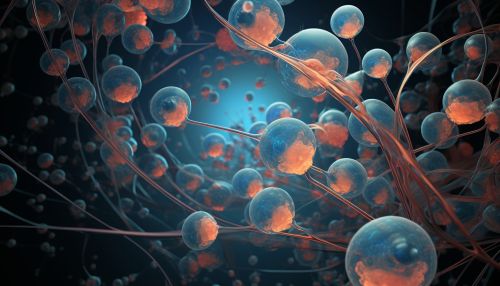Meiosis
Overview
Meiosis is a specialized type of cell division that results in four daughter cells each with half the number of chromosomes of the parent cell. It is a process that occurs in all sexually reproducing organisms, including animals, plants, and fungi. The process of meiosis is instrumental in maintaining genetic diversity within a population, as it allows for the recombination of genetic material between homologous chromosomes.


Process of Meiosis
Meiosis consists of two successive cell divisions, meiosis I and meiosis II, which result in four haploid daughter cells. Each of these divisions is further divided into several phases: prophase, metaphase, anaphase, and telophase.
Meiosis I
Meiosis I is the first division in meiosis and is often referred to as the "reductional division" because it reduces the number of chromosomes from diploid to haploid.
Prophase I
During prophase I, the chromosomes condense and homologous chromosomes pair up in a process called synapsis. This is followed by crossing over, where segments of non-sister chromatids break and reattach to the other chromatid, resulting in genetic recombination.
Metaphase I
In metaphase I, the paired homologous chromosomes align along the metaphase plate of the cell. Unlike in mitosis, the homologous pairs, rather than individual chromosomes, align at the metaphase plate, ready for separation.
Anaphase I
During anaphase I, the homologous chromosomes are separated and pulled to opposite poles of the cell. This is a key difference from mitosis, where sister chromatids are separated instead.
Telophase I and Cytokinesis
In telophase I, the chromosomes reach the poles and the cell divides in a process called cytokinesis, resulting in two haploid cells.
Meiosis II
Meiosis II is the second division in meiosis and is often referred to as the "equational division" because it resembles a mitotic division.
Prophase II
During prophase II, the chromosomes condense again, and the nuclear envelope breaks down if it had reformed.
Metaphase II
In metaphase II, the chromosomes align at the metaphase plate, similar to metaphase in mitosis.
Anaphase II
During anaphase II, the sister chromatids are finally separated and pulled to opposite poles of the cell.
Telophase II and Cytokinesis
In telophase II, the chromosomes reach the poles and the cell divides again, resulting in four haploid daughter cells.
Significance of Meiosis
Meiosis is crucial for sexual reproduction and genetic diversity. By creating haploid cells with unique combinations of genes, meiosis contributes to the genetic variation in a population. This genetic variation is a key factor in evolution, as it provides the raw material for natural selection to act upon.
Comparison with Mitosis
While both meiosis and mitosis are forms of cell division, they differ in several key aspects. The most significant difference is that meiosis results in four haploid daughter cells, while mitosis results in two diploid daughter cells. Furthermore, meiosis involves two rounds of cell division, while mitosis involves only one. Finally, meiosis allows for genetic recombination through crossing over, while mitosis does not.
